Affiliate disclosure: This post may contain affiliate links. Please see our Privacy Policy.
Learn how to identify and forage for elderberry, plus ideas on how to work with and use this exceptional medicinal berry!
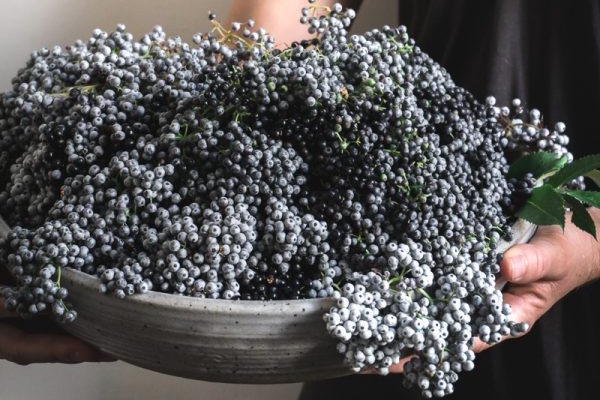
(This post is a contribution by Melissa Keyser)
As you probably can tell by now, I am a dreamer. I spend lots of time thinking of future things. One of which is my future, forever garden.
Row crops will be out in the fields, but my herbs, dye and cutting garden will be behind a fence, lined with fragrant roses that I will pick for tea, for the hips and to grace my tables. And at the garden gate, there will stand two large elder bushes, protecting and looking over the garden space.
In Old European traditions, Elder, or Sambucus, was planted at the edge of the herb garden. Even the name reminds us of the wisdom and status this plant holds. Elderberry is one of the most valuable remedies for colds and flu, and until I have my own plants guarding the garden, I forage for the ripe berries in wild spaces.
Earlier in the year, I harvested the elderflowers. Now that the pollinators have visited, those lacy white blooms that faced towards the sun have started to bow down to the earth, transforming into the heavy gems, ripe berries full of healing juice. I make sure to gather some of these elderberries at their prime to use for my cold and flu potions.
About Blue Elderberry
The elderberries that I have in my area are blue elderberries, Sambucus cerulea or Sambucus nigra ssp. cerulea. This is the elderberry native to California.
The taxonomy of elderberries gets confusing, as there are many different varieties depending on where you live. There are also varieties that go under the name S. mexicana, S. nigra or S. canadensis.
Elderberry Safety
The leaves, stems and unripe berries of elderberry are toxic, so make sure to pick and use only ripe berries. Avoid Red Elderberry, Sambucus racemosa, which are toxic, regardless of ripeness. Raw elderberries are a bit bitter and can cause stomach upset, so they are best cooked.
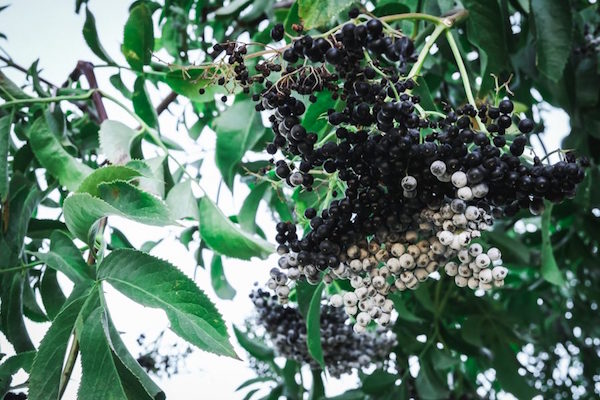
When to Find Elderberries
Elderberries are a summer fruit, but the exact timing depends on your climate. They will be fully ripe about 2-3 months after the flowers bloom. Warmer areas and milder climates might see blooms in June, colder areas September.
Where to Find Elderberries
There are varieties of elder that are native to almost all of North America and Europe. They grow in many different environments, from sides of the freeway to suburban backyards to remote woodland edges, and can be found in full sun to part shade. I most commonly find elder growing near, but not in, rivers and creeks.
How to Identify Elderberry
Elderberry is deciduous, and can be a small tree with a single trunk but is more often a multi-trunked shrub. Elders commonly grow by suckers, so they are often found in clumps, especially if growing in the shade. The stems are hollow when cut and filled with a pith inside.
The variety in my area has green leaves, which are compound, comprising of 5- 9 leaflets that are gently serrated. Some varieties, such the ornamental S. nigra cultivars, have black and lacy leaves.
For more photos of the bushes and the edible flowers, make sure to read about foraging elderflower earlier in the season.
The berry clusters are made up of individual berries, which are small, about the size of a pencil width, and hang in clusters from the ends of the branches. The berries of blue elderberry often look white, because of the natural yeast, called “bloom”, that covers them. Some of the clusters will have both white, black and blue berries.
Privet, a weed tree, has similar colored and shaped berry clusters. However, the leaves of privet are much different than elder, so seek out the branches. Remember the clusters of elderberry appear “flat”, while private is more conical or bunched.
Birds and wildlife love elderberries, so if you see a bush with ripe berries covered with birds, you probably have the right bush!
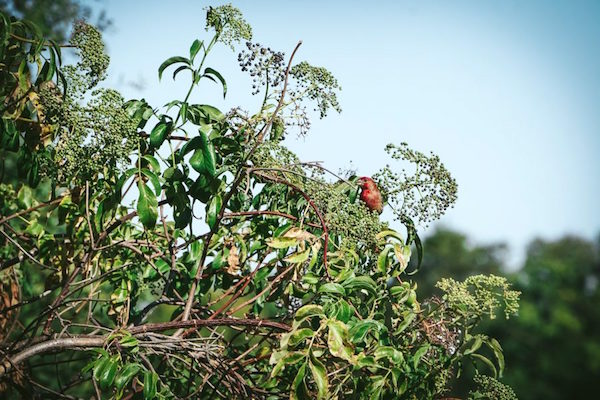
How to Harvest Elderberry
After you have positively identified your berry, simply use pruners to cut the berry clusters off where the cluster stems reach the main stem. Remember that the leaves and stems of elder are toxic, so there is no need to take more of the branch than you need.
Choose clusters with berries that are plump and shiny, avoiding those that have started to dry out or are still green.
Bugs also like to hang out in the clusters, so I give each branch a shake before snipping off the berry cluster. This also helps knock off any dried berries.
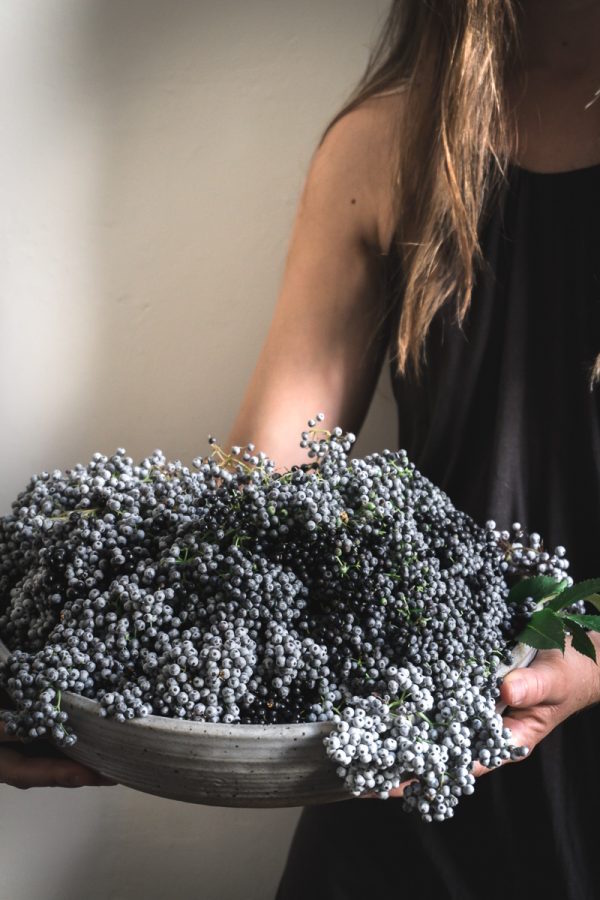
How to Process Elderberry
After I harvest my berry clusters, I like to rinse them off to remove dust. Depending on where you are harvesting from, that may not be necessary. I fill a bowl with water and while holding the stem, quickly dunk and swirl around each cluster.
After your berries are clean, you need to garble them. I recently learned this word and it might be a new favorite. This is the process of removing the stems, leaves and other debris. This can be a slow and tedious process, but it’s important to remove as much of the stems as possible. I sit at a table and working over a bowl, comb my fingers through the clusters, pulling the fruit away from the stem.
After your garbling is complete, you are ready to store or use your berries.
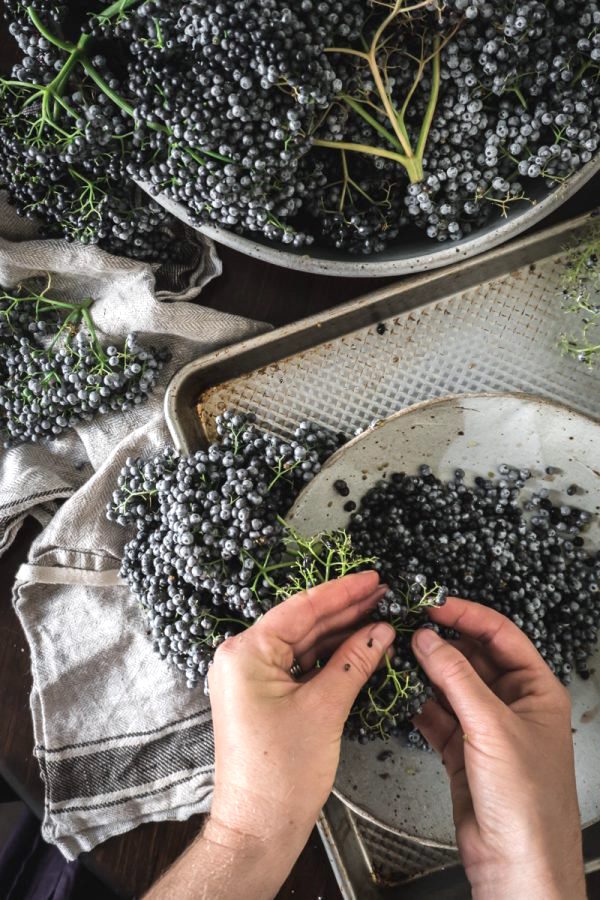
Drying:
Dried elderberry is great in tea, or they can be used later to make tinctures or infuse in honey. I take advantage of my 100+°F days and dry my berries in the sun.
I lay them out on cookie sheets, then cover with pop-up tents used for BBQ and picnic dishes to keep out the flies, and they dry within a day. You could also use a dehydrator or the oven on a very low temp.
Freezing:
Frozen elderberries can be used later in baked goods or turned into medicine the same way they would be used fresh. I lay my berries out on a cookie sheet in a single layer, freeze, then transfer the loose berries to a jar or freezer bag.
If you don’t want to freeze the berries whole, you can also freeze just the juice. Cook the berries over a low heat, mashing with a spoon or a potato masher to release the juice.
Then press through fine-mesh cheesecloth, colander or a jelly bag, and freeze the juice. 8 cups of berries yield about 2 cups of juice.
I still have juice frozen from last year’s harvest, so this year, I froze them whole. I plan on infusing some in honey and then combining with some tinctures when they are done brewing to make a cough syrup.
Ways to Use Elderberry
Medicinally, elderberry has immune-enhancing and antiviral properties. It is a powerful natural remedy in treating viral infections like colds, cases of flu, upper respiratory infections and herpes outbreaks.
As a fruit, raw elderberries are tart, seedy, not very appetizing, and should be cooked to enjoy. They can be used in pies, cobblers, jam or other baked goods.
In the past, I’ve combined elderberry juice cooked with ginger and cinnamon then mixed with honey for an all-purpose winter ill remedy, similar to this one. This year, I’m trying a few different recipes, that I’ll be sure to share when I have finished!
Recipes for how to use your elderberry harvest:
- Classic Elderberry Syrup
- Small Batch Elderberry Mead
- Elderberry Tincture
- Elderberry Gummy Bears
- Elderberry Jelly
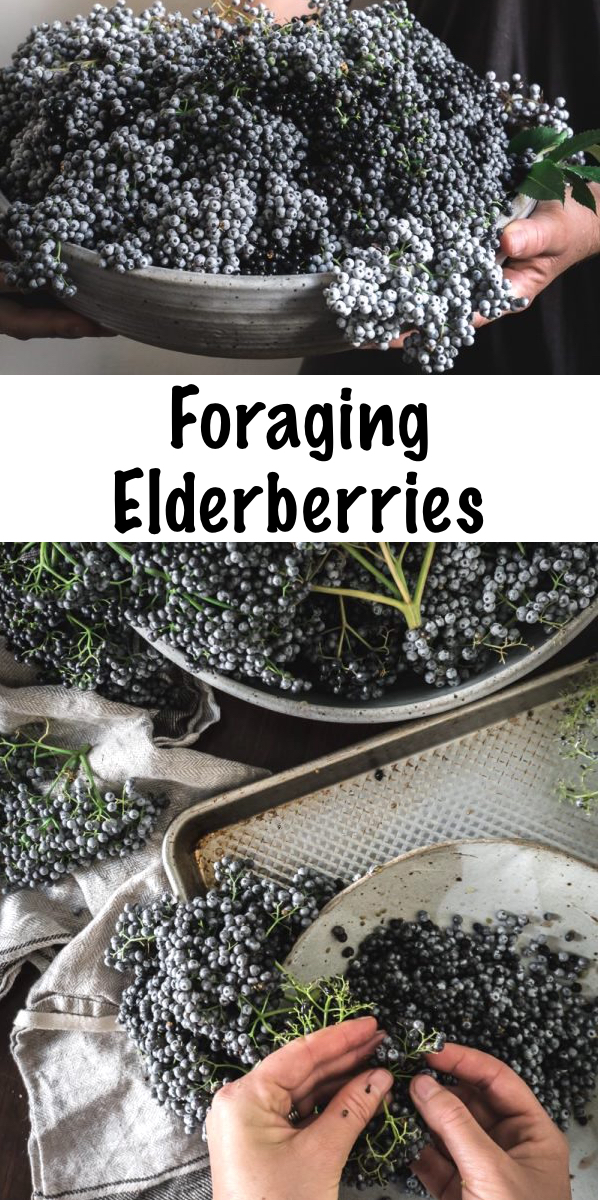
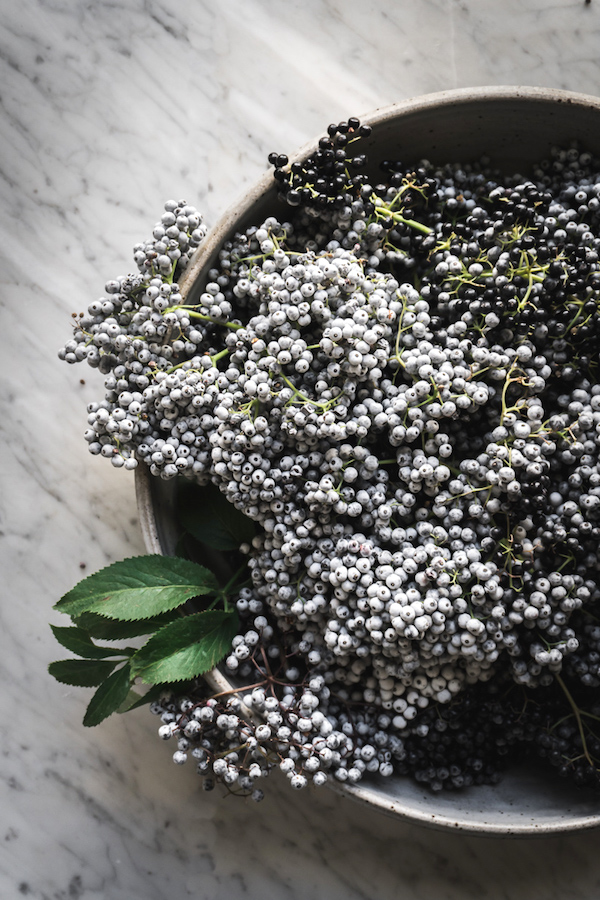


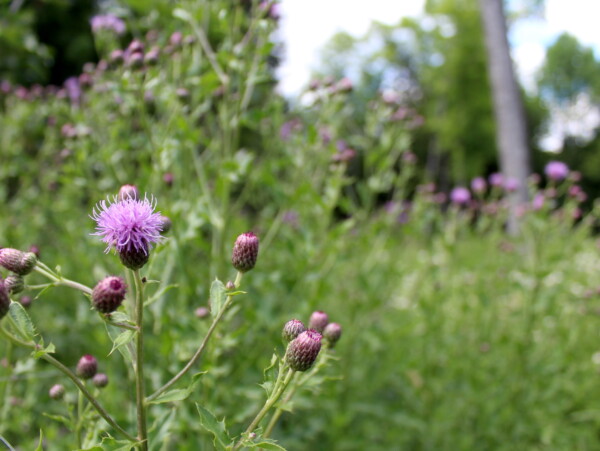
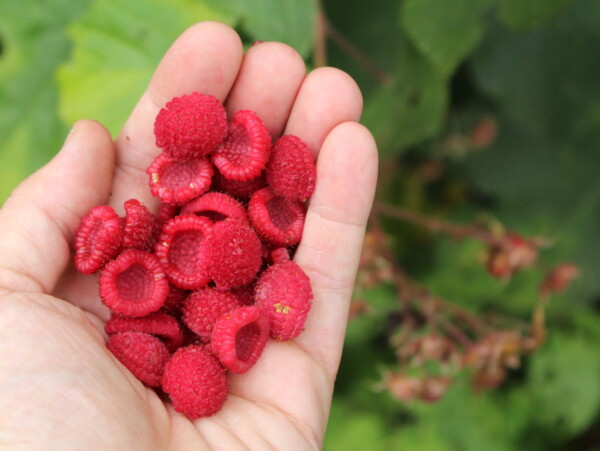
i use the fork idea, but hold the clusters in the mouth of a large paper grocery bag so they don’t bounce all over the kitchen.
I was thinking of canning an eldeerberry oxymel, but then read to can only the juice without the ACV or honey. Does heating destroy the benefits of these ingredients?
Yes it does and it also affects the pH which can impact canning safety.
I love having an elderberry tincture in my arsenal. I find processing (chopping) the dried elderberries to be tedious. Is there any reason I can’t run them through my mini food processor?
It may be difficult to strain all of the solid particles out of the tincture when using a food processor. The other concern is that if any particles remain, that there may be some toxicity in the seeds of the elderberry depending on how it was processed.
Can I use berries that have bloom on them for elderberry syrup? If not how to remove it?
Yes, you can definitely use the berries that have the bloom on them.
Elderberries are TOXIC (POISONOUS) raw. They MUST be cooked before they can be consumed. This is not clear in your post.
It is stated that they can cause stomach upset and it is recommended that they be cooked before consuming.
I am wondering can you harvest the dry elderberries from the bush, and use it as you would if you had dried them?
I can’t think of any reason not to give it a shot!
Thank you
My Croatian Grand.a (Baba) used to make fabulous champagne from the elder blossoms. Clear, sparkling and delicious. High oxtane too…lol. And wine from the berries was also a favourite.
Wow! This sounds amazing!!!!
Great writing! I also freeze my berries but instead of using my fingers I use a silver dinner fork ( garage sale find) to gently comb the berries. Less blue fingers.
Great technique! I’ll have to give it a try this year!
We’ve found a great way to stem the berries from the clusters
Simple put the flusters on a cookie sheet pan covered with parchment or waxed paper— let freeze-/ then simply run your fingers through the clusters and the berries easily fall off !!